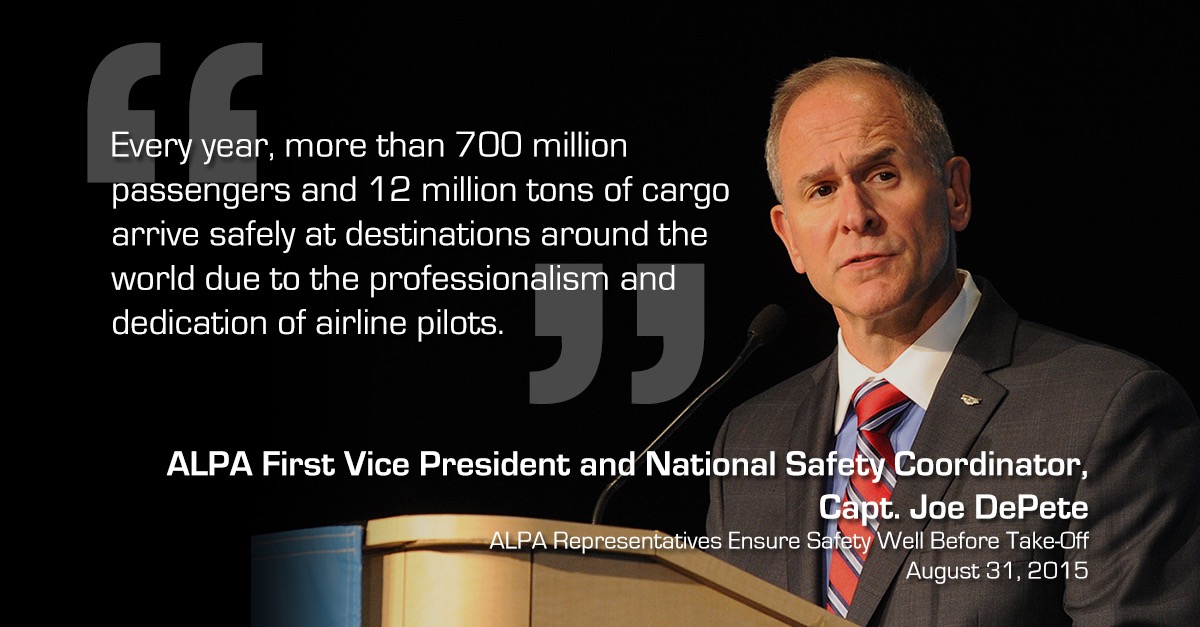As a profession, nothing compares to being an airline pilot. Ask any pilot and you’ll find that we are extremely passionate about flying. For us, it’s more than just a job, it’s in our blood—and you would be hard-pressed to find an airline pilot who would rather do anything else.
While the view from our “office” is unlike any in the world, an enormous responsibility comes with being a pilot, and that is something we never take lightly. That passion and dedication for our profession is why, for nearly 85 years, the pilots of ALPA have been committed to ensuring that we maintain the highest levels of aviation safety and security possible.
The work of an airline pilot extends far beyond the cockpit. Part of our job in safeguarding airline passengers, crews, and cargo is to make certain that safety is the top priority in every element of aviation. Across North America, our work to advance safety can be seen everywhere in today’s air transportation system. One such way pilots effect improvements is through ALPA’s network of airport safety liaisons (ASLs), a key part of our Air Safety Organization’s Airport and Ground Environment Group. These highly trained pilot representatives work with airport authorities and regulatory agencies to make certain that the pilot perspective is included in daily airport operational considerations and construction projects.
The work of ASLs—who are thoroughly familiar with the airports that they serve—is to help identify potential hazards and offer recommendations for improvement. They help provide valuable insights on airport projects ranging from updated arrival and departure procedures to runway incursion prevention, to name just a few.
Every year, ALPA recognizes the important contributions ASLs make to improving aviation safety. At last month’s Air Safety Forum, we presented ExpressJet Airlines First Officer Mark Crystal the Outstanding Airport Safety Liaison Award for his efforts to advance the highest standards of aviation safety at the Houston George Bush Intercontinental Airport and across the southwestern United States. Through the tireless efforts of First Officer Crystal and ASLs across North America, pilot input continues to be incorporated in airport-wide projects.
Every year, more than 700 million passengers and 12 million tons of cargo arrive safely at destinations around the world due to the professionalism and dedication of airline pilots. From the tarmac to thousands of feet above ground, ALPA volunteers continue to improve the safety and efficiency of nearly every aspect of aviation.


